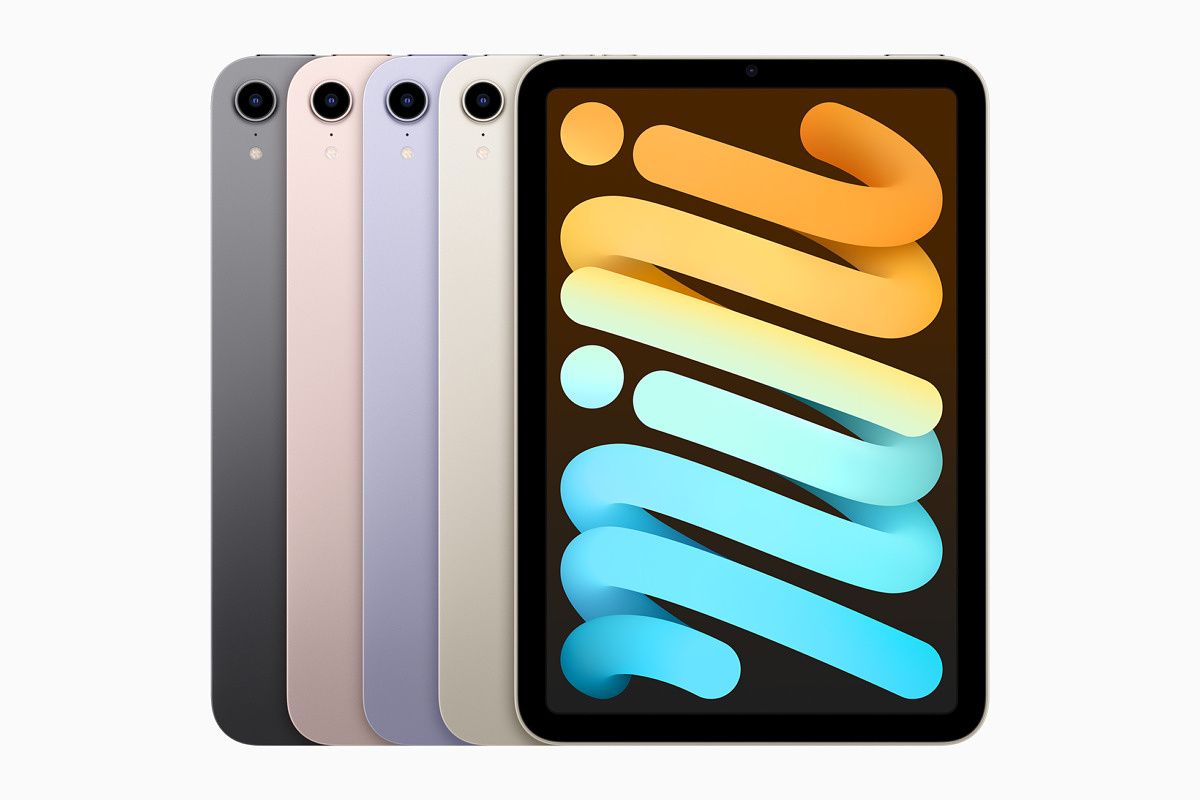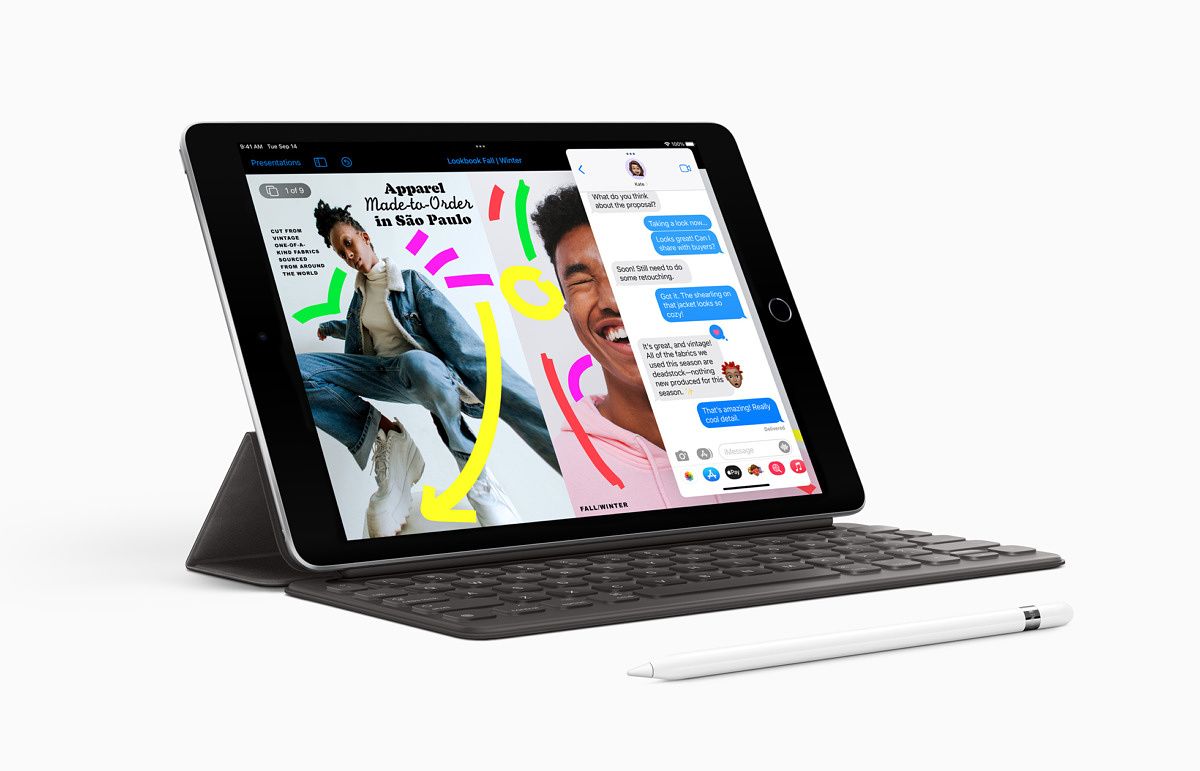iPads are great devices for productivity, entertainment, and more. These versatile Apple tablets are capable of doing a lot — including building and publishing apps. And even if you’re on a limited budget, there’s an iPad for you — for the company manufactures various models with different specifications and price tags. So whether you’re looking for a laptop replacement or a compact tablet, you will likely find an iPad that suits your needs (and some iPad deals to sweeten the pot). If you’ve bought or plan on buying one, you must be wondering how to make the most out of it. So here’s a list of the tips and tricks iPad users should know about.

Navigate this article:
- Learn how to multitask like a pro
- Get tasks done quickly with keyboard shortcuts
- Make the keyboard float
- Attend virtual concerts and cinemas with your friends
- Separate your work and entertainment environments
- Build and publish apps without a Mac
- Make the most out of the iPad-Mac friendship
- This 11-inch iPad is the latest Pro tablet from Apple. It is powered by the M1 chip and supports the Apple Pencil 2nd Gen.
- The iPad Mini 6th Gen is the latest compact iPad from Apple. It is powered by the A15 Bionic chip and supports the Apple Pencil 2nd Gen.
- The iPad 9th Gen is the latest affordable iPad from Apple. It is powered by the A13 Bionic chip and supports the Apple Pencil 1st Gen.
Learn how to multitask like a Pro
macOS and Windows are known for their advanced multitasking abilities. You can open, resize, and move around plenty of app windows at the same time. Even on iOS 15, multitasking on iPhones is too limited when compared to that on a Mac. However, iPadOS — particularly version 15 — takes mobile multitasking to the next level. You still can’t compare it to a desktop operating system, but it has become decent when integrating certain features and shortcuts into your workflow.
The 3-dot button

On iPadOS 15, users get a 3-dot button on open apps towards the middle top of the screen. By clicking it, you will get a floating menu to choose between Fullscreen, Split View, and Slide Over modes. This mechanism is inspired by the green dot button in the top left corner of macOS apps. By having that button there, users can instantly enter and leave Fullscreen mode without needing to drag apps around — as it was on earlier iPadOS versions.
Split View

Split View allows you to split the screen between two apps. You can interact with either and seamlessly drag and drop content between them. It’s worth noting, though, that not all apps support this feature. As long as the developer has implemented it, you’ll be able to use two apps at once in the main view. It’s perfect for typing documents while having a reference page open. I also used to depend on it when I was working as a translator. I’d have the source on one side and the targeted text I’m typing on the other. Bonus tip — you can also drag an app over another in the App Switcher to initiate Split View.
Slide Over
Multitasking isn’t limited to Split View on an iPad. You can work on more apps simultaneously, thanks to Slide Over. This feature allows you to have more apps floating over the main background window — which you can swipe to the edge of the screen to hide. In this mode, you can have multiple (supported) apps open and switch between them without impacting the main window in the background.
Center Window

And it doesn’t stop there — the last version of iPadOS introduces Center Window. This allows you to open a medium-sized window in the middle of the screen. By holding on an email, message, or note, you get this view with a dedicated 3-dot multitasking button as well. This makes hopping between apps to gather information or reply to others as convenient as you’d expect it to be.
The Shelf

There’s even more to multitasking on this OS version. When users launch an app, a shelf will appear at the bottom of the screen. It displays the opened windows of this particular app to easily close or switch to them. It additionally allows you to open new windows as well. The shelf disappears immediately after you interact with the app, so you don’t have to worry about swiping it away.
Picture-in-Picture
No, we’re not done yet — there’s more to multitasking on an iPad. Picture-in-Picture (PiP) allows you to view videos in a floating window while doing other tasks. So you can watch your favorite YouTube video or the latest Netflix shows while a Slide Over app is open on top of two apps in Split View mode. You don’t have to picture that — I know it pains the brain.
Quick Note

This is the last multitasking feature — I promise. Quick Note is one of the new features Apple introduced across its operating systems this year. By swiping up from the corner of your iPad screen, you can open a small floating note window. This allows you to quickly type your thoughts without exiting the app you’re currently using. Quick Note is a smart feature that will remember the context when viewed in the Notes app. So, for example, if you take a Quick Note while using Safari, the Notes app will link this memo to the website you were viewing at the time.
Get tasks done quickly with keyboard shortcuts

iPadOS supports mice and keyboards natively. So you can connect a mouse to drag a cursor around and a keyboard to type through physical buttons. It’s somewhat known that macOS has keyboard shortcuts that make life significantly easier (they don’t pay your bills, though). What plenty of users don’t know is that iPadOS 15 brings a similar feature to the table. If you have a keyboard connected to your iPad, you can press and hold the Command key to view the list of keyboard shortcuts the app you’re using supports. This way you can get actions done from your keyboard, without needing to touch the display.
Make the keyboard float

The virtual iPad keyboard can occupy a big chunk of your screen real estate. What not all users know is that you can make it shrink and float. This way you can move it around and make sure it doesn’t obscure your content. The floating keyboard looks similar to that on iOS. It also supports QuickType (swipe to type) — which isn’t present on the iPad keyboard in its full form. To make your keyboard float, simply pinch it with two fingers. You will then be able to drag it around through the small gray bar at its bottom. To restore the keyboard to its original state, place two fingers on the floating one and spread them apart.
Attend virtual concerts and cinemas with your friends

The world has been too COVID-y lately and entertainment venues are often closed — even for vaccinated people. Apple took that into consideration by inventing a cure releasing SharePlay. This new feature is available on all of the company’s latest operating systems. It allows users to consume digital goods together through FaceTime. So you can watch Apple TV Plus, Disney Plus, and even Twitch while you hear and/or see your friends. The feature also allows you to listen to music together — assuming the service you use supports it. It’s worth mentioning, though, that most — if not all — subscription apps require each participant to have their individual account. This feature isn’t a Family Sharing equivalent for free group access.
Separate your work and entertainment environments

As I’ve mentioned, iPads are versatile devices that can be used for multiple purposes. To live an organized life, one has to set boundaries to accommodate the different routines we go through every day. iPadOS 15 enables users to create different Focus modes, depending on what they’re focusing on. As our detailed guide on Focus mentions, this feature allows you to create custom Home Screen pages.
These pages change automatically whenever you switch to a certain Focus mode. So you can create a layout with the education apps you have installed and an agenda widget for when you’re using the study Focus mode. Another example would be placing all installed games on a page for the gaming Focus. This way the whole virtual environment automatically changes and adapts to whatever you’re doing on your iPad.
Build and publish apps without a Mac

Swift Playgrounds 4 allows you to build, preview, and publish your own apps to the App Store from an iPad. As long as you’re running the latest iPadOS version, you’ll be able to do that without a Mac — for the very first time. You would need an Apple Developer account, though, to publish the apps on Apple’s platform. Without paying the $99/year fee, you’re only restricted from publishing. Swift Playgrounds is free to download, so you can actually build functional apps on an iPad independently without spending a cent.
Make the most out of the iPad-Mac friendship
iPadOS and macOS are the bestest of friends! Apple is famous for its tightly-integrated ecosystem that allows users to make the most of their devices. This enables users to switch between and depend on two (or more) devices simultaneously. The process is usually natural and doesn’t require you to think twice.
Handoff and Continuity
First off, both of your devices should have WiFi (connection to a network isn’t required) and Bluetooth enabled. You will then be able to copy/paste between them as you would normally do on one device. You can also resume using an app on the other device where you’ve left off on the first, such as viewing a Safari webpage.
Sidecar
This feature allows you to use your iPad as a second Mac display. In fact, you can even use an Apple Pencil on the touch display with compatible macOS apps. This feature works wirelessly — of course — so you won’t need to connect any cables. Some companies offer third-party services to enable a similar feature on outdated iPads/Macs. However, Apple’s solution is free, wireless, requires no additional apps, and is available by default.
Universal Control (coming next Spring)

Apple teased this feature back in WWDC21. It had stated it would release it during Fall. However, the company recently pushed its release till Spring 2022. Universal Control almost breaks the space-time continuum by allowing you to drag-and-drop items from one device to another. You can pair up to three Mac and/or iPad devices and move your cursor through them all, magically. This is perfect for artists and designers who use their iPads to illustrate but resume their work on macOS. The process is natural and effortless.
iPads are capable devices that are only getting more powerful with every new hardware and software release. What once used to be a large, stretched-out iPhone is slowly turning into an ultra-mobile laptop of sorts. They’re not for everyone, as they still lack plenty of Mac/PC features. However, those who can fully — or even partially — depend on them for their workflows understand how simple they are to use. I’ve used an iPad as a laptop replacement before. At the time the tasks at my job enabled me to do so. Now — while theoretically I can get work done through an iPad — I’d rather depend on a MacBook. This doesn’t invalidate the iPad’s worth nonetheless.
Which iPad model have you bought or plan on buying? Let us know in the comments section below.
The post Tips and tricks iPad users should know about appeared first on xda-developers.
from xda-developers https://ift.tt/3FfPJYa
via IFTTT



Aucun commentaire:
Enregistrer un commentaire